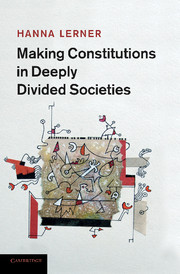PART II - Varieties of constitutional incrementalism
Published online by Cambridge University Press: 25 October 2011
Summary
The next three chapters will trace the constitutional debates in three deeply divided societies, Israel, India and Ireland, all of which, at independence, adopted various incrementalist constitutional strategies to address their internal foundational conflicts. The differences between the three countries – in terms of geographic size, population, culture and religious composition, as well as in the circumstances under which their constitutional debates occurred – are dramatic. At independence in 1947, India had a population of 250 million, of which roughly 75 percent were Hindu and nearly 20 percent were Muslim, with the remainder comprised a variety of religious minorities, including Sikhs, Christians, Buddhists, Jains and Parsis. Hundreds of different languages and dialects are spoken in India, a country of numerous ethnic groups, cultural traditions, tribes, sects and castes. In addition, India faced the challenge of incorporating into the newly established polity 562 princely states, which were not part of British India. By contrast, Israel had a population of only 600,000 Jews at independence in 1948. Despite the presence of a sizable Palestinian minority numbering around 150,000, and composed mainly of Muslims with smaller communities of Christians, Druze and Bedouins, as far as the constitutional debate was concerned, the main divide was between the religious-Orthodox and the secular Jewish populations. Finally, the Irish Free State was established in 1922 in the twenty-six counties of Ireland and had a population of two million, 95 percent of which was Catholic, with a small Protestant minority.
- Type
- Chapter
- Information
- Making Constitutions in Deeply Divided Societies , pp. 47 - 50Publisher: Cambridge University PressPrint publication year: 2011



